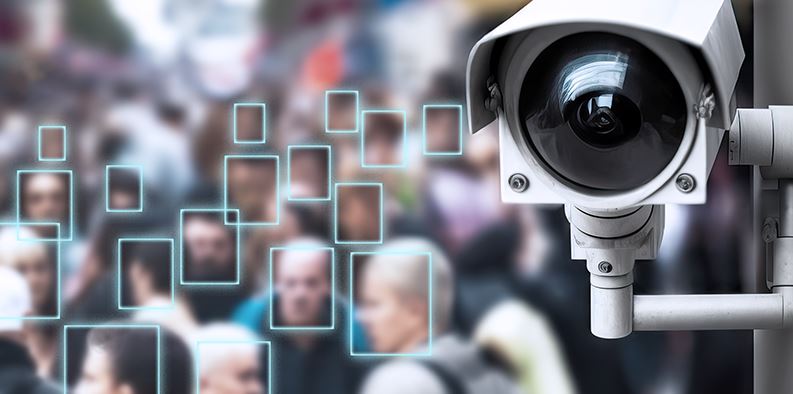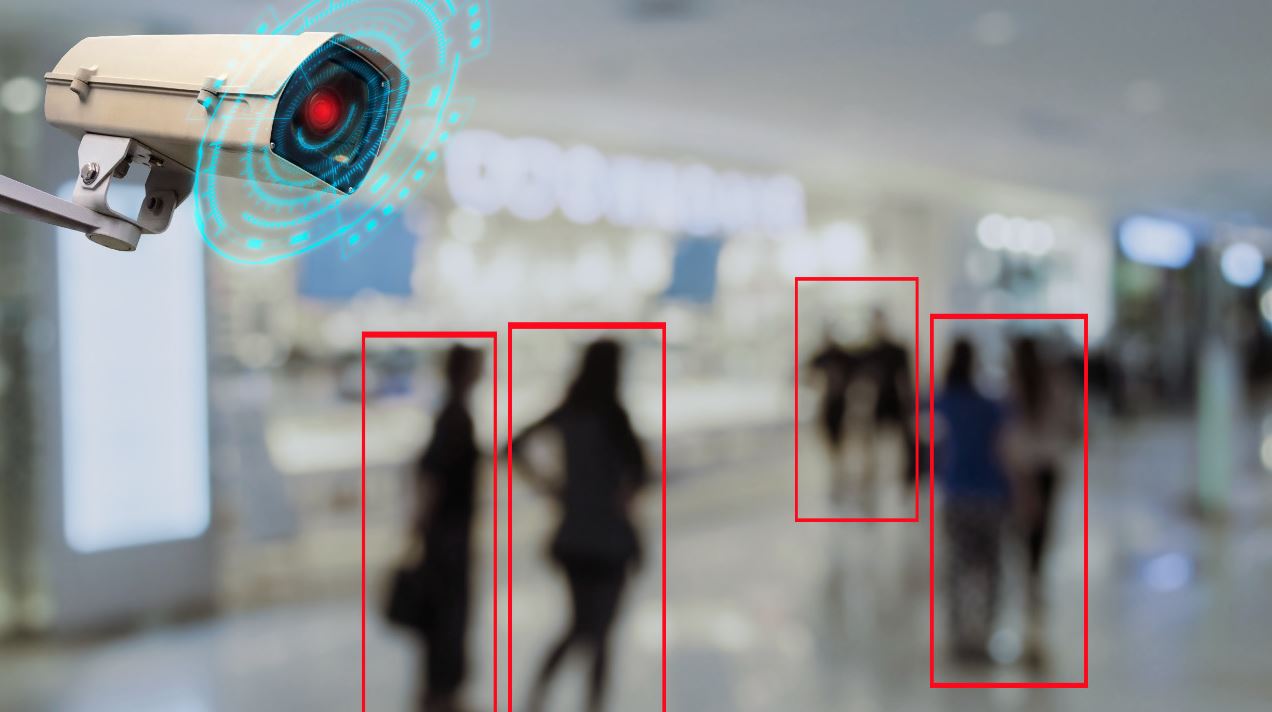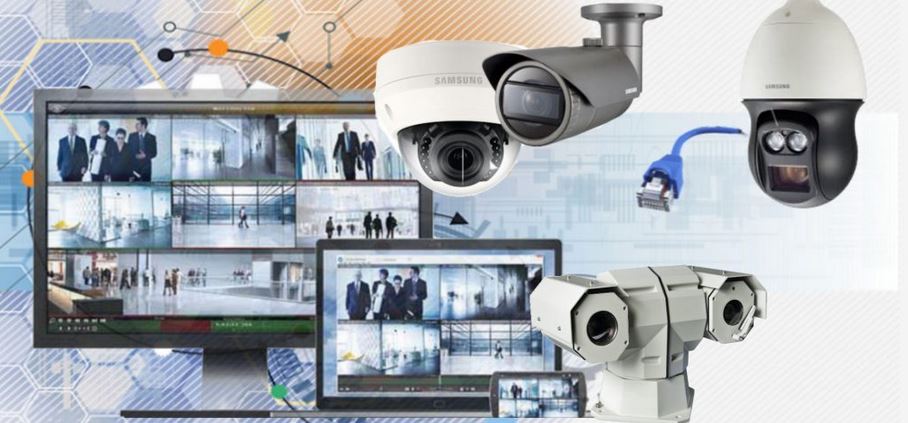CCTV and Video Surveillance Systems A Comprehensive Guide for Enhancing Security
In today’s security-conscious world, the terms “CCTV” and “video surveillance” are often used interchangeably, yet they represent distinct concepts with important differences. This introduction aims to clarify these terms to help you choose the right security system for your home or business. CCTV, or closed-circuit television, specifically refers to a system where video is recorded and transmitted within a closed network. It’s traditionally used in settings where high-security is paramount, such as banks or government buildings. The system’s footage is not publicly accessible, making it less susceptible to interference and ensuring a higher level of security.
On the other hand, video surveillance encompasses a broader range of technologies that can include both CCTV systems and more modern digital systems that may use wireless technology and can be monitored remotely. This type of surveillance is highly versatile, making it suitable for not only enhancing security but also for monitoring operations in various settings like retail environments, offices, and public areas. Both CCTV and video surveillance systems play crucial roles in safeguarding assets and providing a layer of security against potential threats.
Understanding the specific capabilities and limitations of each system is essential to determining which is most appropriate for your specific needs. Whether it’s the closed and secure nature of CCTV or the expansive and accessible features of video surveillance, each has its place in the comprehensive security strategies employed by today’s homes and businesses. This clarity in definition not only aids in selecting the right system but also enhances the effectiveness of your security measures, ensuring peace of mind and protection of your premises.
Understanding CCTV Cameras
Definition and Meaning of CCTV (Closed-Circuit Television)
Closed-Circuit Television, commonly referred to as CCTV, is a type of security system that involves the use of video cameras to transmit a signal to a specific, limited set of monitors. Unlike broadcast television, the video transmitted by CCTV is not publicly accessible but is monitored, primarily for surveillance and security purposes. This system relies on strategic placement of cameras, and private monitoring in a closed network.
Technical Setup: Wired System, Transmission to Specific Monitors or Recorders, Security Features
CCTV systems typically consist of wired cameras that connect directly to a recording device and monitor through coaxial cables or fiber optics. This setup ensures that the video feed is only accessible within the closed network, enhancing security by preventing external access. The cameras are often connected to Digital Video Recorders (DVRs) or Network Video Recorders (NVRs), which store and manage the footage. Security features of CCTV systems may include motion detection, night vision, and in some advanced setups, facial recognition technology. These features make CCTV an excellent choice for locations requiring high security and constant surveillance.
Typical Uses and Applications
The use of CCTV systems is prevalent in places where high-level security is a priority. Common locations include casinos, where security needs to constantly monitor for fraudulent activities; banks, which are at a high risk of theft and require constant surveillance; and government buildings, where security and monitoring are crucial for the safety of sensitive information and personnel. CCTV systems are also mandated in other high-security areas like airports and military bases.
Exploring Surveillance Cameras
General Definition of Surveillance Cameras and Their Broader Use
Surveillance cameras include a range of camera systems used for monitoring activities in private and public areas. Unlike CCTV, surveillance cameras can be either part of a closed network or used in more open settings where the footage can be streamed over the internet to various locations. Surveillance cameras are used not only for security purposes but also for monitoring behavior, activities, and information for managing, controlling, or protecting people.
Variability in Systems: Wired vs. Wireless, Local vs. Remote Monitoring
Surveillance cameras offer a greater degree of variability compared to CCTV systems. They can be connected through wired setups, which provide a stable connection, or wireless systems that offer more flexibility in placement and are often easier to install. Wireless surveillance cameras can transmit video via Wi-Fi, making it possible to monitor footage remotely from a smartphone or computer. This flexibility allows surveillance cameras to be used in a wider range of environments from urban to rural settings, enhancing their applicability.
Advantages Such as Flexibility, Ease of Installation, and Diverse Application Areas
One of the primary advantages of modern surveillance cameras is their flexibility. They can be easily moved from one location to another without the need for extensive wiring or infrastructure changes, making them ideal for temporary installations or in environments where conditions change frequently. Installation is usually straightforward, often requiring minimal technical skills, especially for wireless models that connect directly to a power source and transmit footage via the internet.
The application areas for surveillance cameras are extensive. They are used for traffic monitoring, where they assist in the management of traffic flow and the enforcement of traffic laws. In residential settings, they enhance home security, allowing homeowners to monitor their property remotely and receive alerts if unusual activity is detected. Surveillance cameras are also used in wildlife observation, enabling the study and documentation of animal behaviors without disturbing their natural habitats.
Overall, both CCTV and surveillance cameras serve crucial roles in modern security and monitoring applications. Their deployment depends on specific needs, ranging from high-security requirements to more flexible, broader monitoring applications. Understanding the specific features and benefits of each can help in selecting the right system for a given environment.
Comparative Analysis
Image Quality
When comparing CCTV and surveillance cameras, one notable difference is in image quality. CCTV cameras typically utilize lower resolutions because their primary function is live monitoring rather than recording high-quality footage. Standard resolutions for CCTV systems might cap at 720 x 576 pixels, adequate for identification in controlled environments but limited for detailed analytical purposes.
Surveillance cameras, on the other hand, often boast higher resolutions—ranging from 1920 x 1080 pixels to 4K. This provides sharper images and more detail, beneficial for both live monitoring and recordings, especially in scenarios requiring facial recognition or license plate identification. The quality of these images also depends heavily on the camera’s lens, sensor, and the compression technology used. Advanced lenses and larger sensors capture more light and details, while efficient compression algorithms help in maintaining image quality with reduced file sizes.
Power Supply
CCTV systems are traditionally wired, requiring a direct power connection which can restrict placement but ensures a stable power supply, critical for continuous monitoring. Surveillance cameras provide more versatility in power options. Many modern cameras operate on batteries, solar panels, or Power over Ethernet (PoE) cables that allow for easier installation in remote or hard-to-reach areas without the need for extensive wiring.
Storage Capabilities
The method of storing footage also varies significantly between the two systems. CCTV cameras typically store their footage locally on Digital Video Recorders (DVRs) which can handle large amounts of data and offer fast retrieval within a secure network. Surveillance cameras have embraced the cloud, allowing for storage on cloud services or Network Video Recorders (NVRs) that can be accessed remotely. This flexibility supports scalability and ease of access but may involve recurring costs and raises concerns about data security and privacy.
Cost Implications
Initial investments for CCTV systems are generally lower compared to advanced surveillance cameras, which incorporate more sophisticated technology. However, the total cost of ownership for CCTV can be higher due to the need for professional installation, wiring, and maintenance. Surveillance cameras, while potentially more expensive upfront, often result in lower ongoing costs since they are easier to install and maintain, particularly if they use wireless technology.
Usage Scenarios
Choosing the right camera system often depends on the specific application. CCTV systems are ideal in environments where constant monitoring is required, such as in casinos or banks. Their fixed setup ensures that all angles are covered without the risk of signal interference. Surveillance cameras are more suited to areas needing flexible monitoring or temporary installations, like construction sites, small businesses, or residential properties. They are also preferable in settings that require remote viewing capabilities.
Choosing Between CCTV and Surveillance Cameras
Factors to Consider
When deciding between CCTV and surveillance cameras, consider the primary purpose of the system. For high-security areas where detailed monitoring is crucial, a CCTV system may be more appropriate. If flexibility, remote access, and easy installation are priorities, surveillance cameras are likely the better choice.
Budget Considerations
Budget is another critical factor. If cost constraints are tight, CCTV might be the way to go, keeping in mind the potential for higher installation costs. For those with a bit more to spend upfront for long-term savings on maintenance, surveillance cameras could be more cost-effective.
Specific Preferences
Finally, consider personal or logistical preferences. For environments where installation flexibility and minimal disruption are key, wireless surveillance cameras offer significant advantages. In contrast, for settings that can accommodate extensive wiring and require a permanent solution, CCTV systems provide reliability and robustness.
In conclusion, both CCTV and surveillance cameras have their strengths and are best selected based on the specific needs and constraints of the user. By carefully evaluating the intended use, budget, and operational preferences, you can choose the most suitable system to secure your premises effectively.
Spotter Security’s Services in Canada
Introduction to Spotter Security’s Offerings
Spotter Security stands as a trusted provider of comprehensive security solutions across Canada, specializing in the installation, maintenance, and monitoring of advanced security systems. Their services cater to a diverse range of needs, ensuring that every installation is tailored to provide maximum security and efficiency. With a focus on utilizing cutting-edge technology, Spotter Security offers both CCTV and surveillance camera systems, accommodating various business requirements and preferences.
Overview of Their Experience and Expertise
With over two decades in the security industry, Spotter Security has amassed a wealth of experience and expertise in securing multiple business sectors. Their portfolio includes projects in manufacturing, retail, warehousing, and office complexes, showcasing their ability to adapt and meet the unique security challenges presented by different industries. The company’s dedicated team of professionals is highly skilled in both the technical aspects of security systems and the strategic implementation of these systems to maximize coverage and effectiveness.
Call to Action: Booking a Consultation for Personalized Security Solutions
Spotter Security understands that each business has unique security requirements. They offer personalized consultations to ensure that their clients receive the best advice and solutions tailored to their specific needs. Prospective clients are encouraged to contact Spotter Security to discuss how their business can be better secured with the right technology and strategic setup.
Throughout this discussion, the distinctions between cctv and video surveillance cameras have been highlighted, underscoring the importance of understanding each system’s strengths and limitations. It’s evident that the choice between these two types of security systems can significantly impact the effectiveness of a business’s security strategy.
In conclusion, selecting the right type of camera system is not just about enhancing security but also about integrating a solution that aligns with the operational dynamics and specific security challenges of a business. Spotter Security is poised to assist Canadian businesses in making informed decisions that not only secure their assets but also provide peace of mind through continual monitoring and support. For those looking to enhance their security measures, a consultation with Spotter Security could be the first step towards a safer and more secure business environment.
News -Diddy CCTV Video Exposes Truth From Denial to Admission of Assault
Breaking Down the Mom and Son CCTV Video Implications and Insights
Maya G Viral Video Original A Viral Sensation and Her Impact
Zakharchuk Real Estate Agent Chicago Il South Side Viral Video
Exploring the Impact of the Mama Sakit Mama Video Viral Phenomenon
Exploring the Kendra Karter Fan Bus Experience: A Journey with Alexas Morgan
Emotional Journey on The Fan Bus Aria Electra Baby Alien’s Life-Changing Encounter




